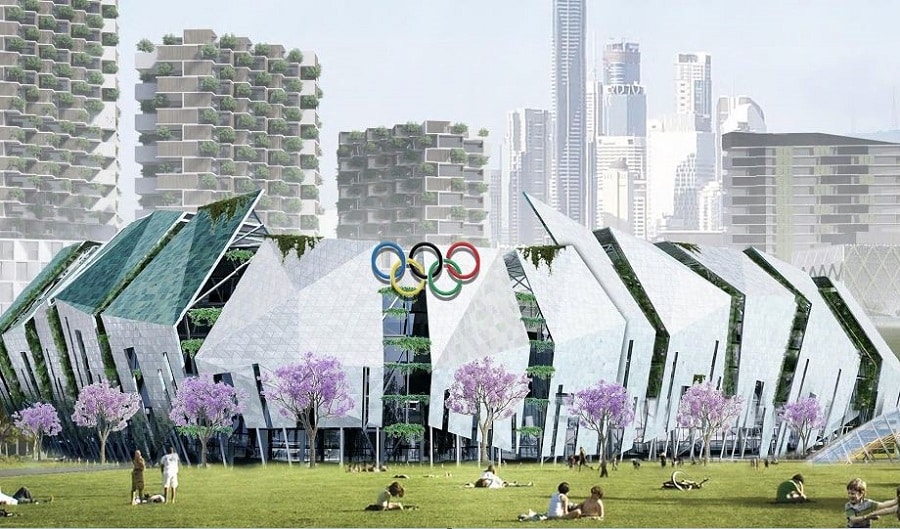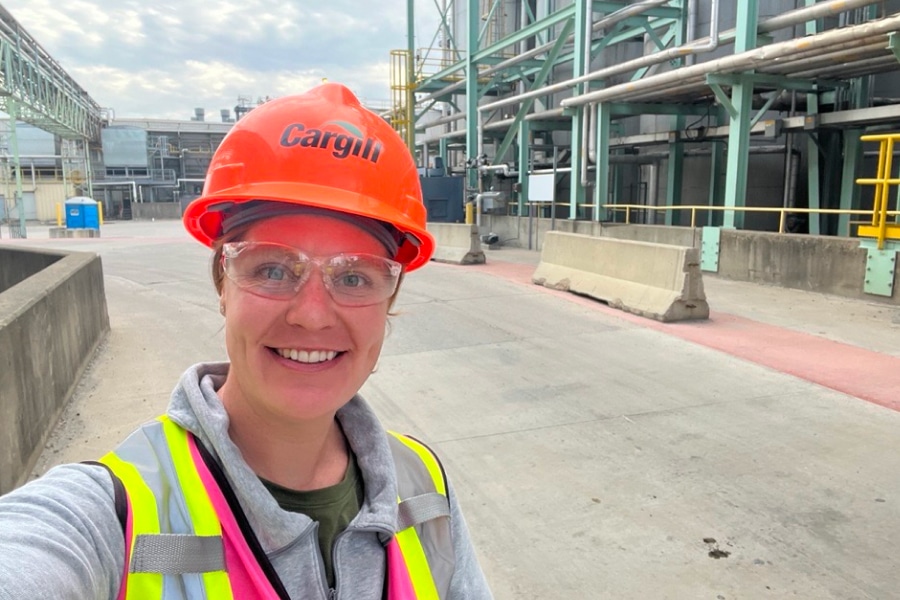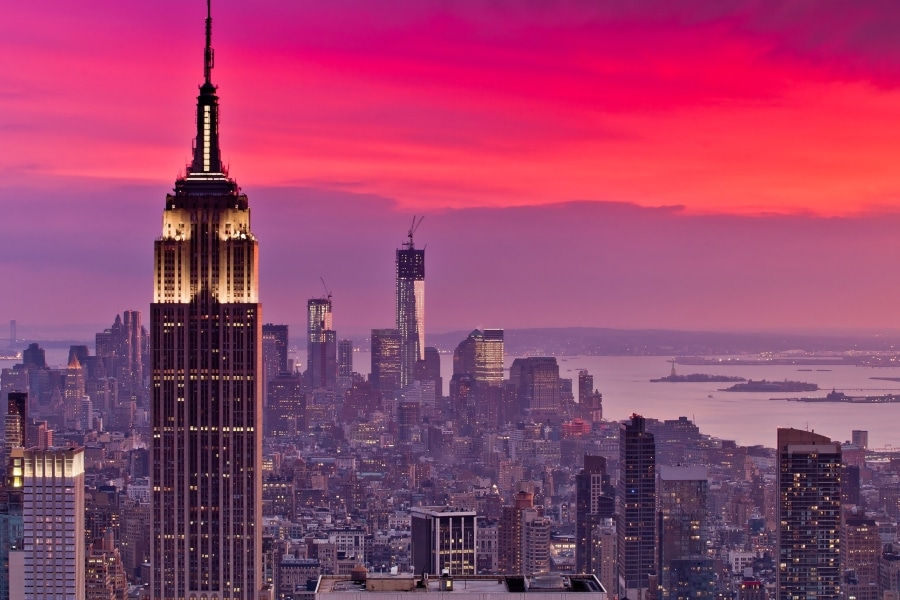Stadium design concept by Urbis
Brisbane, Queensland, was chosen as the host city of the 2032 Olympics, an undertaking that promises a raft of new construction in the decade ahead. Brisbane will be the smallest city by population to host the Olympics since 1952, but its new and existing venues will rival the largest hosts.
In total, Brisbane plans to use 12 existing venues for the 2032 Olympics. It will also build four new venues, re-build four other structures for the event and erect two temporary buildings for the games. Both the Olympics and Paralympic Games will create a two-decade pipeline of development opportunity for Queensland, with more than $8 billion in economic and social benefits expected across the state. The event is also estimated to create about 90,000 full-time jobs in Queensland and 122,900 nationally.
Said Annastacia Palaszczuk, Premier of Queensland: “I can see the river lined with people watching big screens all taking part in the fun and excitement of the games. There’s South Bank leading to West End which is connected to Roma Street via the Kurilpa Bridge with a new bridge under construction for the new Queen’s Wharf development. There are city cats offering even more options for transport. All of this is infrastructure we already have.”
In meeting the demands of the International Olympic Committee, Brisbane won the competition over other major countries such as Germany by being more convincing on one key point: sustainability. A central part of Brisbane’s proposal submitted to the IOC was based on sustainable projects designed to minimise harmful emissions of the 2032 Games.
“Right from the beginning we wanted this to be a sustainable Games,” Brisbane’s Lord Mayor, Adrian Schrinner, said. “We wanted to commit and … we would be the first host city to contractually agree to a climate-positive Games.”
In fact, it is no coincidence that the Queensland government has set 2030 as the deadline for achieving 50% coverage of energy needs through renewable sources. In view of the Brisbane Olympics 2032, sustainability thus remains a key theme in the state’s development policies—be it through mobility or in energy production and distribution.
‘The Gabba’, Woolloongabba
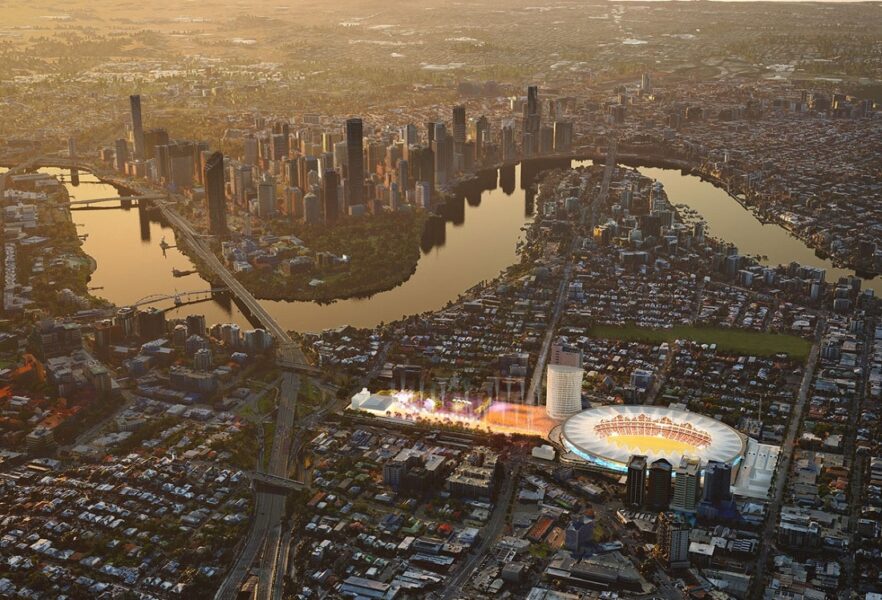
The main attraction of any Summer Olympics is the central stadium, which hosts the opening and closing ceremonies and serves as the venue for most of the track and field events.
Brisbane will re-develop “The Gabba” Woolloongabba Stadium as the central venue for the Olympics. The roughly $1 billion re-development upgrade of the stadium, previously used for AFL, cricket and other events, will increase seating capacity by about 40,000-50,000. The upgrade will also include the new Cross River Rail Station, which is currently under construction right next to the stadium, where thousands will be able to board trains in and out of the city.
‘Athletes Village’, Hamilton

Athletes and officials central to the Olympics’ success will reside in a re-development of Hamilton Wharves, now home to Brisbane’s international cruise ship terminal, among other luxury amenities. The new Athletes Villages, which will host more than 10,000 athletes, will be built in the area; once the games conclude, the buildings will be repurposed as private/public housing.
‘Brisbane Live Arena’, Brisbane City
In addition to the premier outdoor stadium, 18,000-seat Brisbane Arena, already under construction before the city was awarded the Olympics, will be included as part of the event’s venues. City officials hope the stadium, as well as its place in the 2032 Olympics, will help revitalise a currently underutilised western gateway in the city for thousands of people.
‘International Broadcasting Centre’, South Brisbane
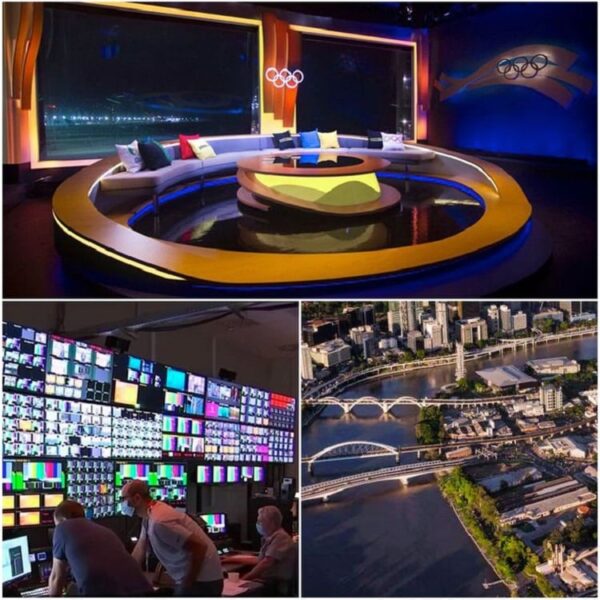
Finally, as the Olympics broadcast to hundreds of millions of people all over the globe, the International Broadcast Centre will serve as Brisbane’s hub for televising the event. The broadcast hub, which will be a temporary structure, will be located at the 7ha site in South Brisbane and will be converted into parkland after the games, extending the South Bank precinct around the river as the Brisbane City Council has been planning for several years.

